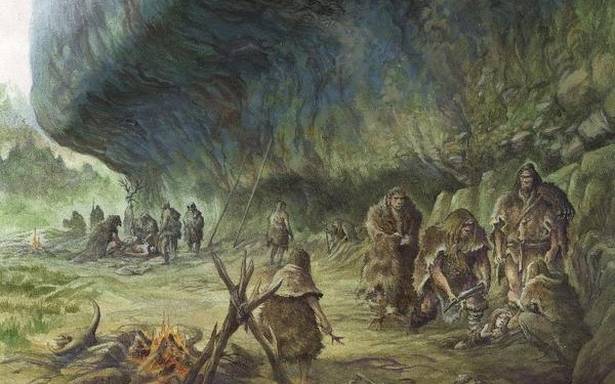Here is some of the most interesting research to have appeared in top science journals last week
(Subscribe to Science For All, our weekly newsletter, where we aim to take the jargon out of science and put the fun in. Click here.)
Obesity and tumours
Published in Cell
Obesity is one of the major cancer risk factors. But how are they related? A new study has noted that a diet containing high fat impels the immune system’s T-cells which accelerates tumour growth. “We now know there is a metabolic tug-of-war between T-cells and tumor cells that changes with obesity,” says co-senior author Arlene Sharpe from Blavatnik Institute. So there is a high chance that a person with a high fat diet is at more risk of getting diagnosed with tumours than a person on a normal diet.
Did Neanderthals bury their dead?
Published in Nature

Examining material from the 1970s excavations at the Musée d’archéologie nationale, France. Thousands of bone remains were sorted and 47 new fossil remains belonging to the Neandertal child ‘La Ferrassie 8’ were identified. © Antoine Balzeau – CNRS/MNHN
When and how did funerary practices start? Were human beings the first? Or did Neanderthals, our closest extinct relatives, also bury their dead? A recent study conducted by an international team of researchers showed that a Neanderthal child (two-year old) was buried, possibly some 41,000 years ago. The skeleton was found at the La Ferrassie rock shelter, in Dordogne, which had been a popular Neanderthal site in Europe. The team writes that more detailed multidisciplinary studies are needed to help advance our understanding of Neanderthal behaviour.
Mobile app to sequence DNA
Published in GigaScience
Researchers have developed a new app named iGenomics, which helps you to study DNA through smartphones. This app currently works in iPhone only. “Today, we all carry professional cameras in our pockets, so it’s not that hard to imagine in the next couple years, all of us carrying our own DNA sequencers on our smartphones, as well,” said Dr. Michael Schatz, a researcher at Cold Spring Harbor Laboratory and the Departments of Computer Science and Biology at Johns Hopkins University.
New ichthyosaurus discovered
Published in PLOS ONE

A new genus and species of ichthyosauru, which probably lived 150 million years ago, has been discovered near the Kimmeridge Bay, in Dorset, United Kingdom. It has been named Thalassodraco etchesi and is two-metre long. This finding is the fifth known ichthyosaur, and the smallest so far discovered in the U.K.
How horse manure helps wild giant pandas
Published in PNAS
It is quite rare to observe any species roll in fecal matter but wild pandas residing at low habitat temperature were found to sniff, roll and cover their whole body with horse excreta. Based on animal behaviour analysis, molecular assays and climate data, the paper notes that this rolling was “found as a temperature-chemical-related behaviour that may contribute to pandas’ cold tolerance.”
This article is auto-generated by Algorithm Source: www.thehindu.com


